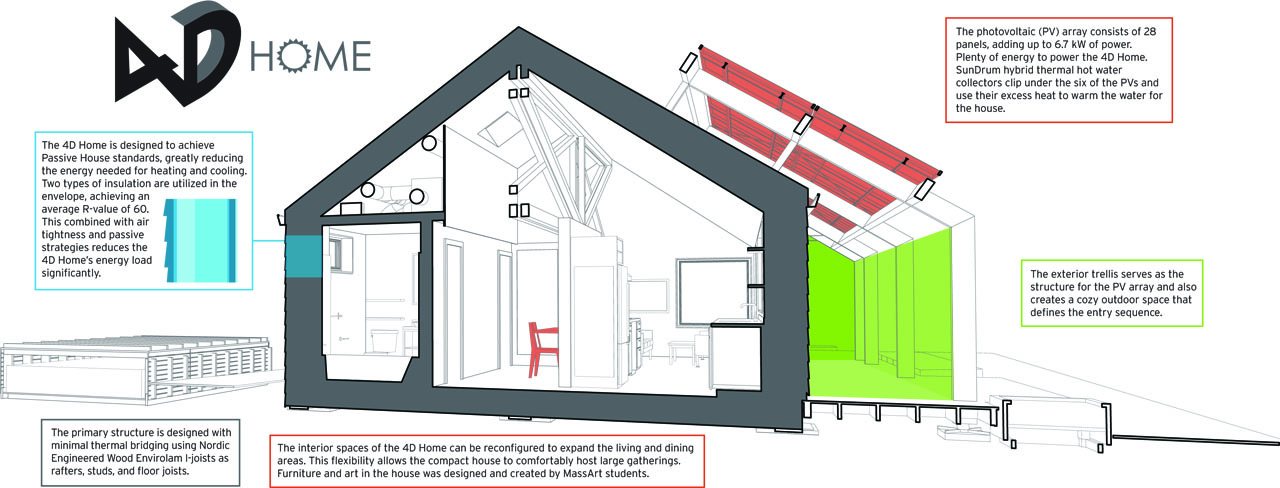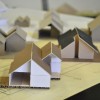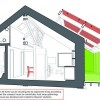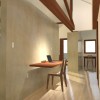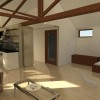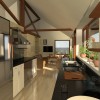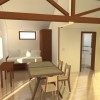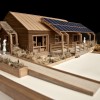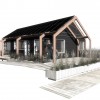2011 Solar Decathlon: Team Massachusetts' 4D Home
Video
Because the Solar Decathlon competition stipulates that homes’ interiors measure less than 1,000 sq. ft., many teams choose young or retired couples as their target market. However, Team Massachusetts, which is comprised of students from the Massachusetts College of Art and Design and the University of Massachusetts at Lowell, created a home fit for a family of three. They articulated spaces with flexibility in mind in order to meet occupants’ changing needs throughout their lives: the 4D Home is three-dimensional over time.
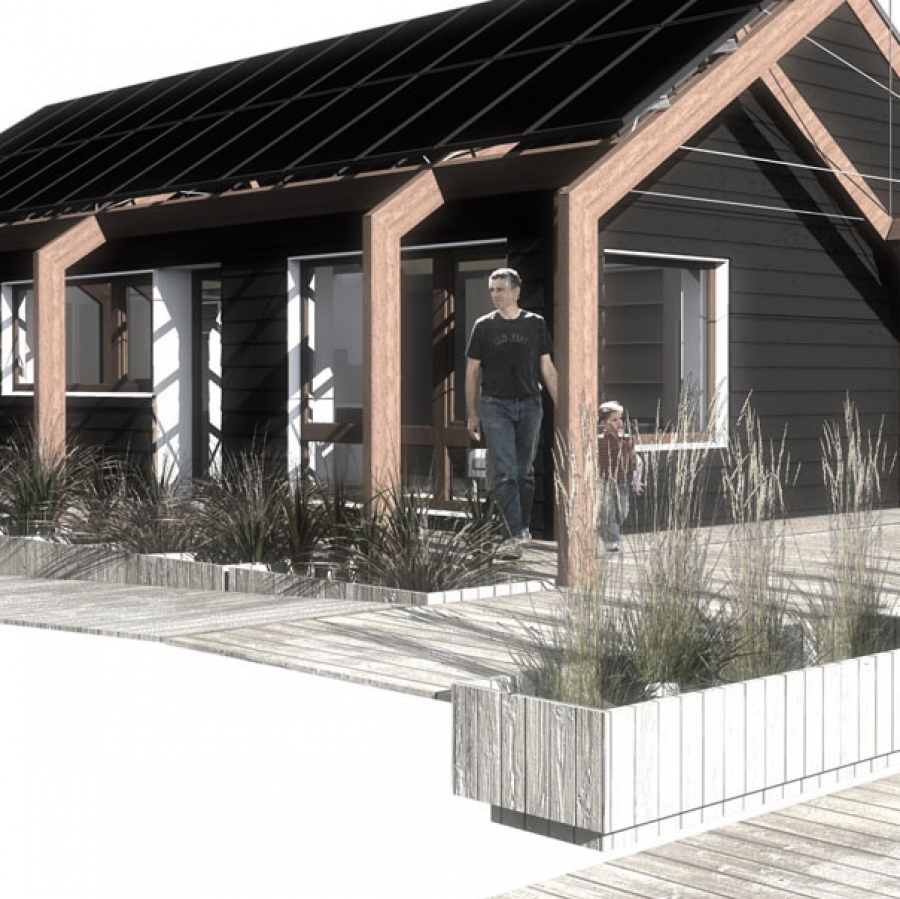
A modern interpretation of New England vernacular, the 4D Home establishes a prototype that is marketable to a wide audience, fitting with residential trends in the area. However, team members “weren’t interested in stylistic components, but rather incorporating practical elements into the design; for example, the sloped roof sheds snow,” explains Spencer Culhane, Project Manager and a recent graduate from the Massachusetts College of Art and Design with a Bachelor of Fine Arts in Architectural Design. To that end, the home features an abstracted gabled roof. The exterior is clad with fiber cement board, which calls to mind traditional wood siding. Inspired by the concept of the classic New England “dooryard,” team members designed a transitional, multi-functional exterior space. This south-facing side yard is shaded by a wood trellis that also supports a photovoltaic array.
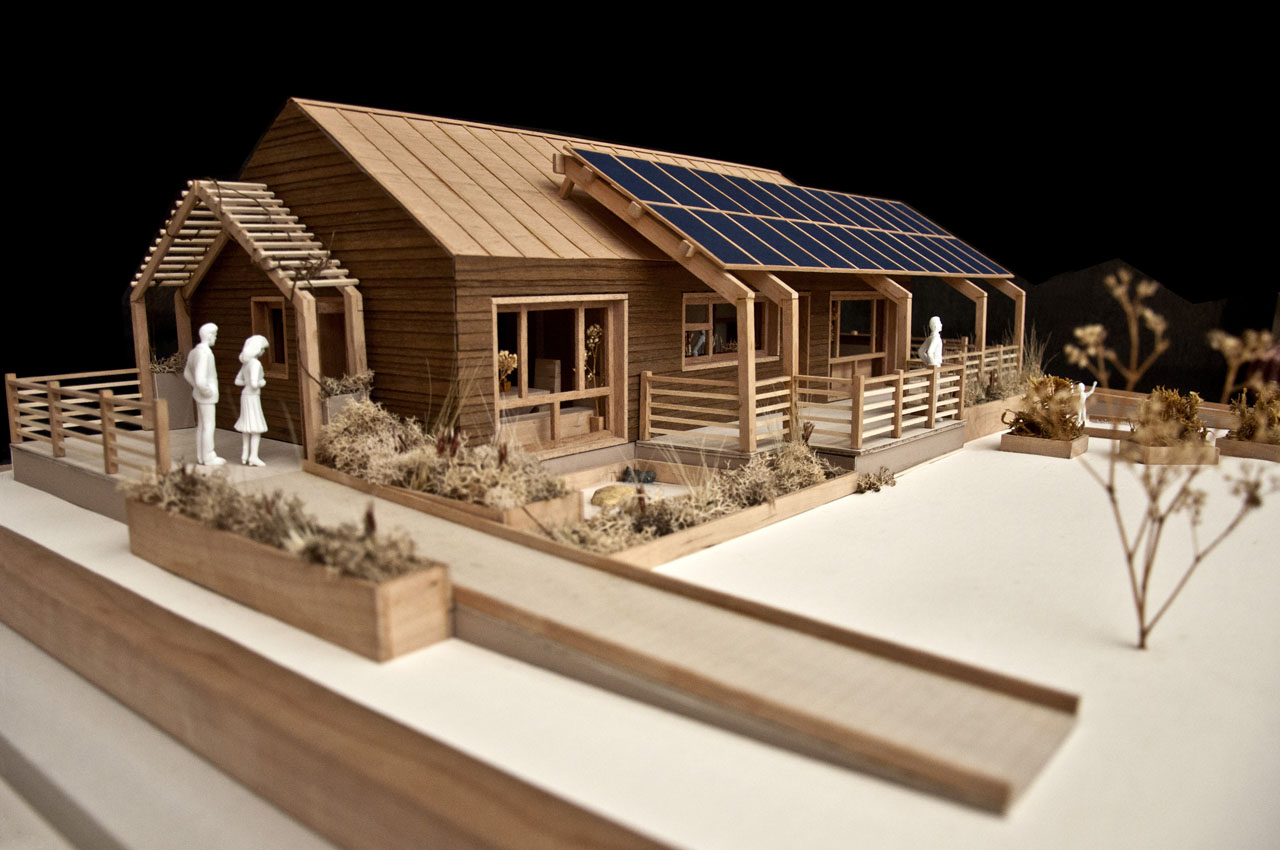
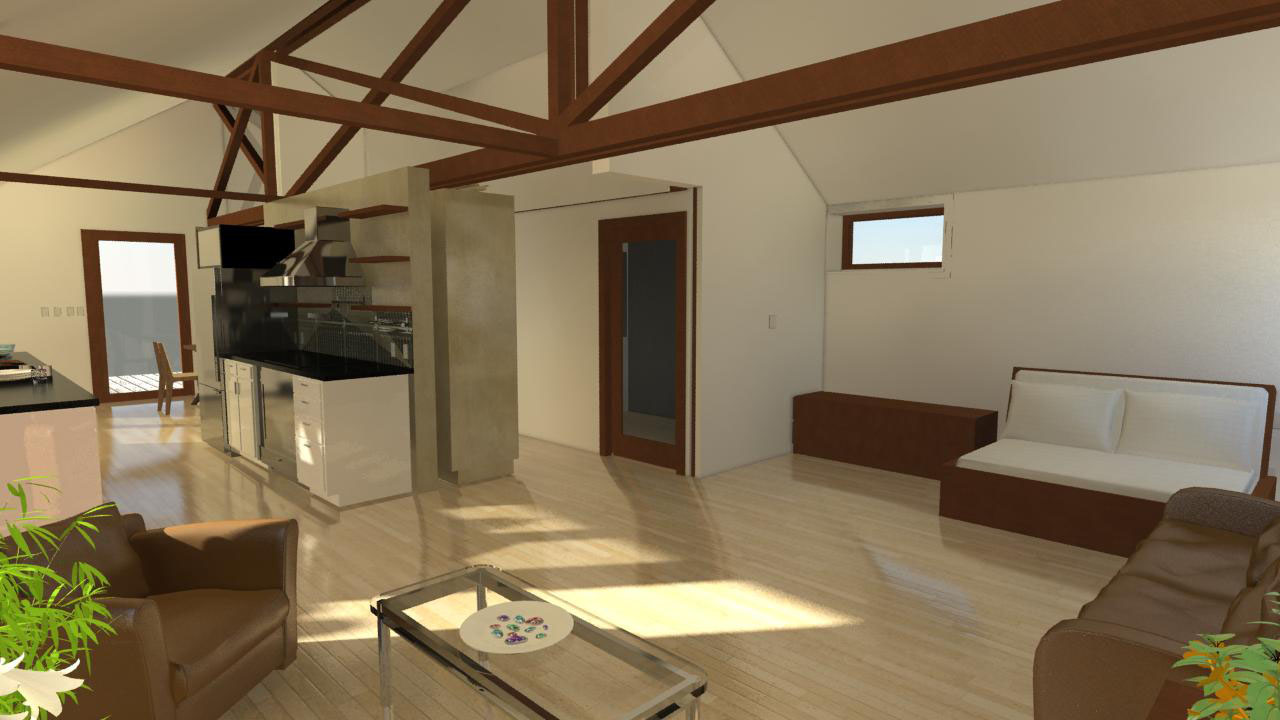
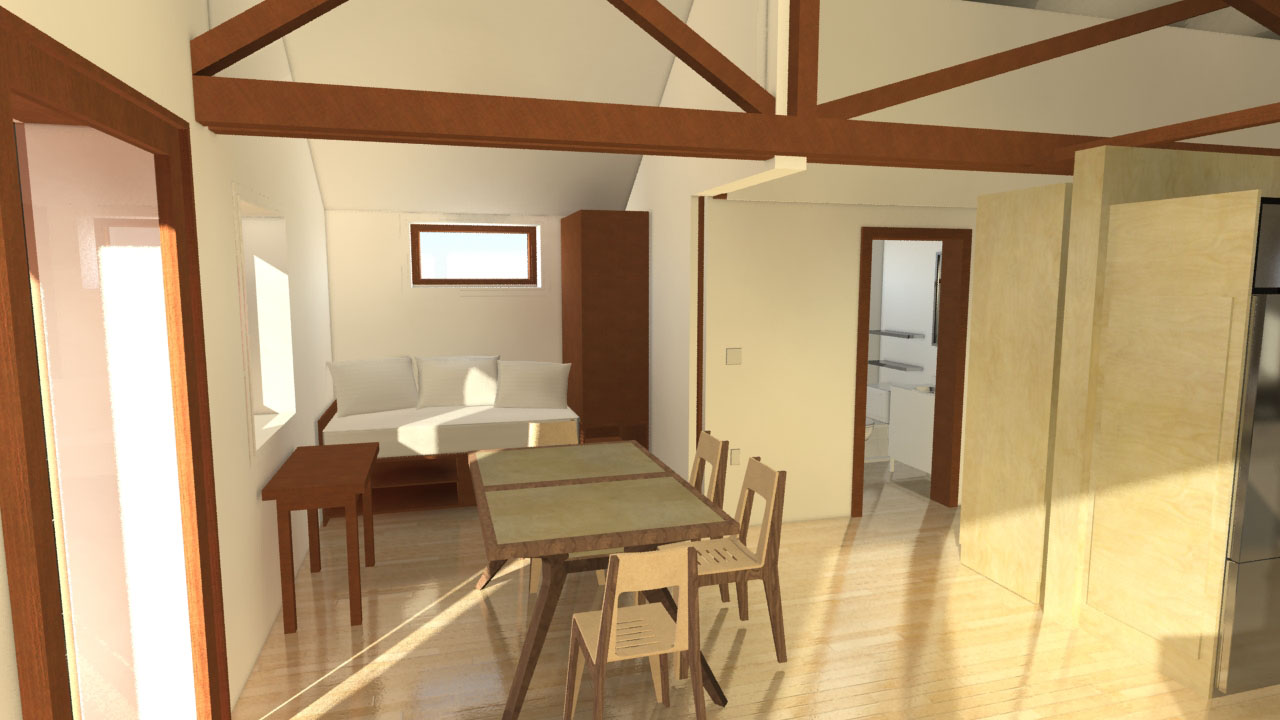
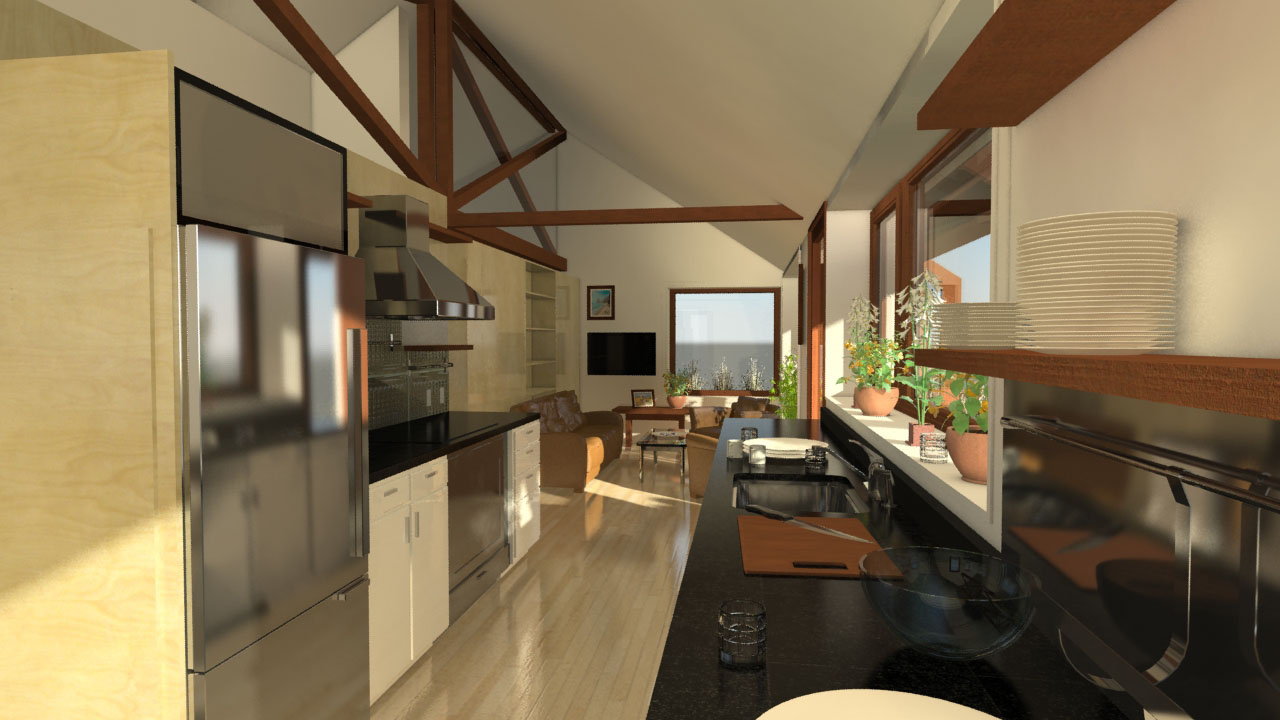
The kitchen serves as the core of the house, dividing public and private spaces and defining the circulation axis. Off to each side of the kitchen are the living and dining rooms, and behind them are the master bedroom and kid’s room, respectively. Located directly behind the kitchen is the bathroom and a skylit workspace. Working within the limited footprint, team members made the interior adaptable by creating movable millwork pieces that serve as room partitions while providing additional storage. This allows them to “pack in more program and layer the functions,” according to Culhane. With the slide of a partition, occupants can open the master bedroom to the living room; the bed folds away to create additional seating. Similarly, the kid’s room and dining room can be combined into a space for entertaining.
Another design objective for the team is to educate residents on their energy consumption and production. A glass door exposes the mechanical room, which contains the hot water tank, electrical utilities, and laundry. These components serve as literal reminders rather than being “tucked away and hidden,” explains Culhane. Eschewing complicated technologies for monitoring energy consumption (the house is built to Passive House Standards but also relies on the PV panels, a heat pump, and solar hot water system), the team created an intuitive user interface that even children can use. “You don’t have to separate systems from your day-to-day function,” believes Culhane.
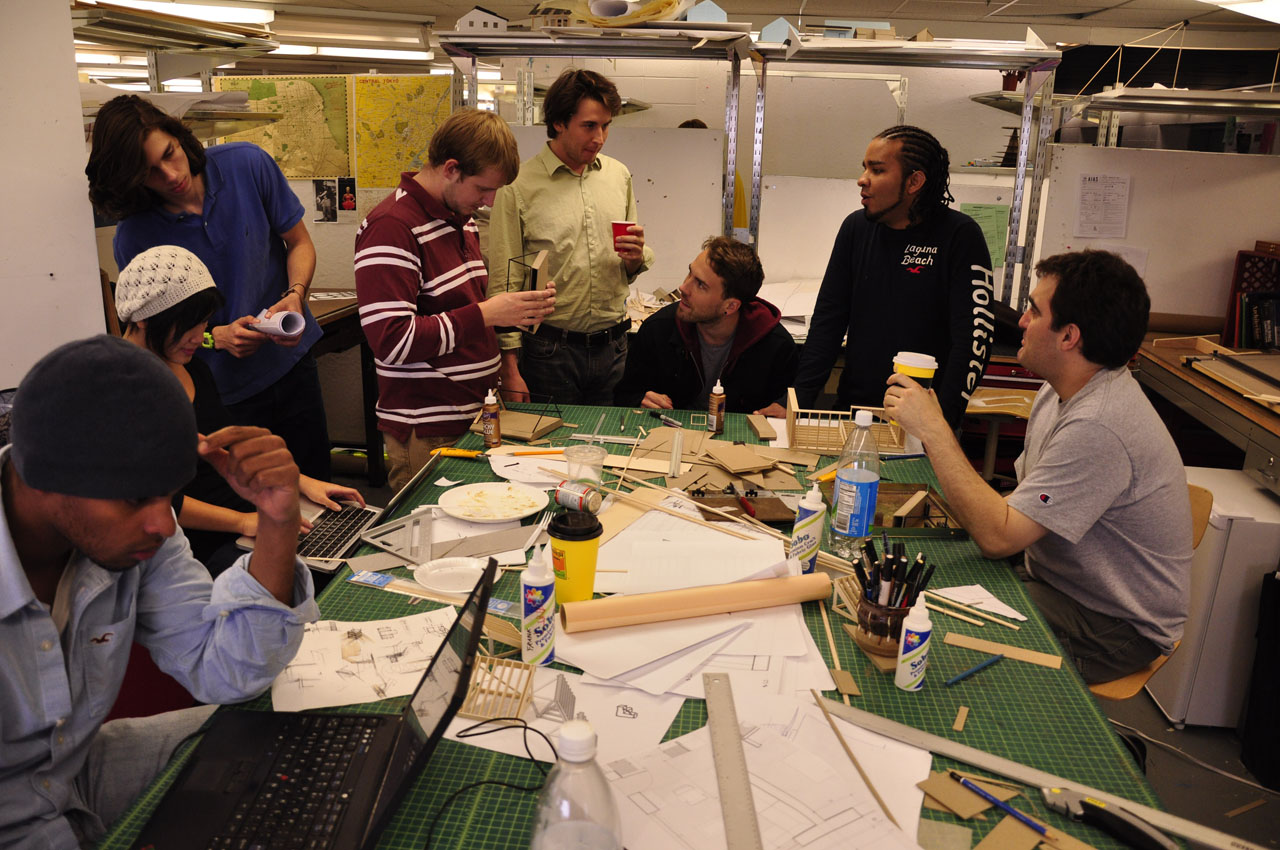
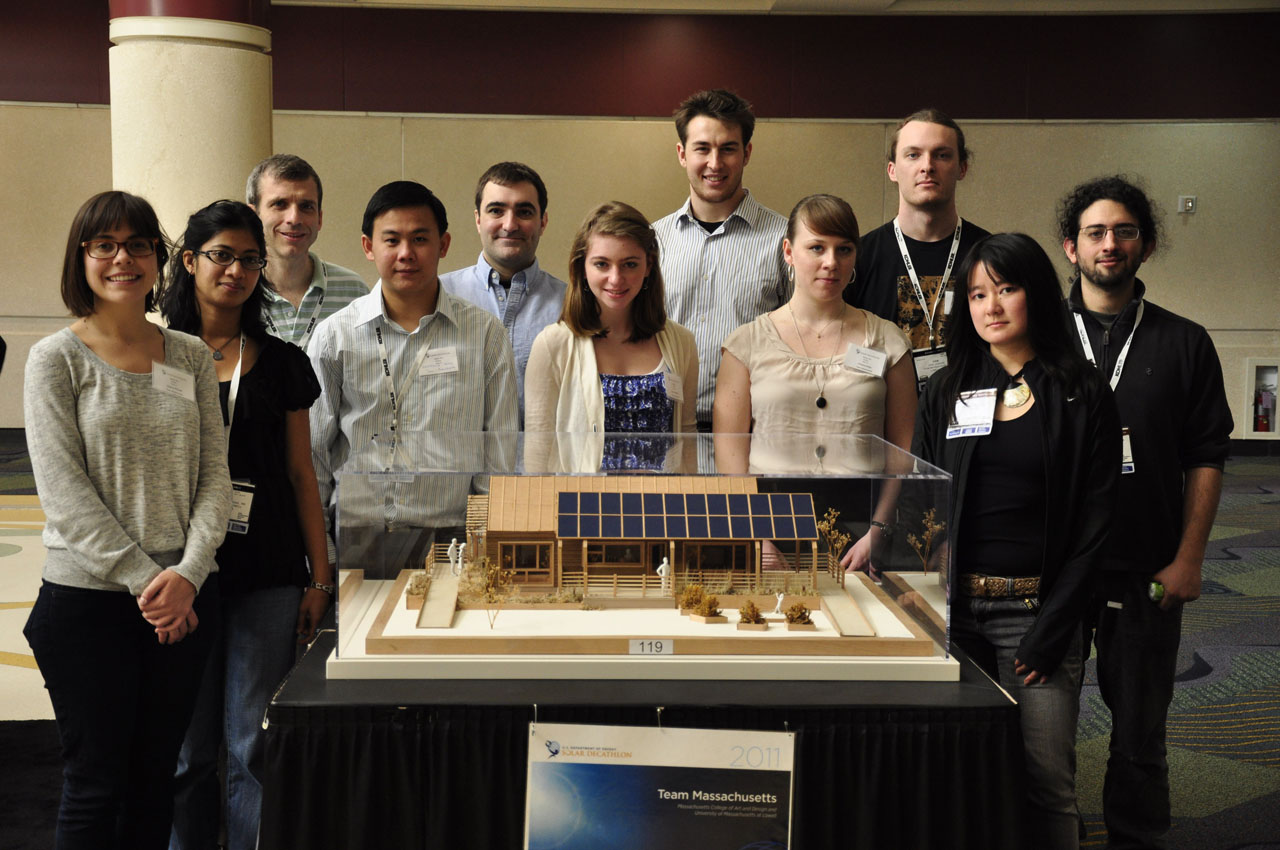
Team Massachusetts received approval from the Boston Redevelopment Authority to construct and test the home in the Boston Marine Industrial Park. It will be on view to the public before it is moved to Washington, D.C., for Solar Decathlon 2011. Following the competition, the team hopes to sell the home to a family in the New England area. They intend to sell if for only $100,000 – much less than what it cost to build, although it will qualify for credit in the new affordability category in Solar Decathlon 2011, with a construction cost under $250,000.

Murrye Bernard
Murrye is a freelance writer based in New York City. She holds a Bachelor's degree in Architecture from the University of Arkansas and is a LEED-accredited professional. Her work has been published in Architectural Record, Eco-Structure, and Architectural Lighting, among others. She also serves as a contributing editor for the American Institute of Architects' New York Chapter publication, eOculus.
Website: www.murrye.com
